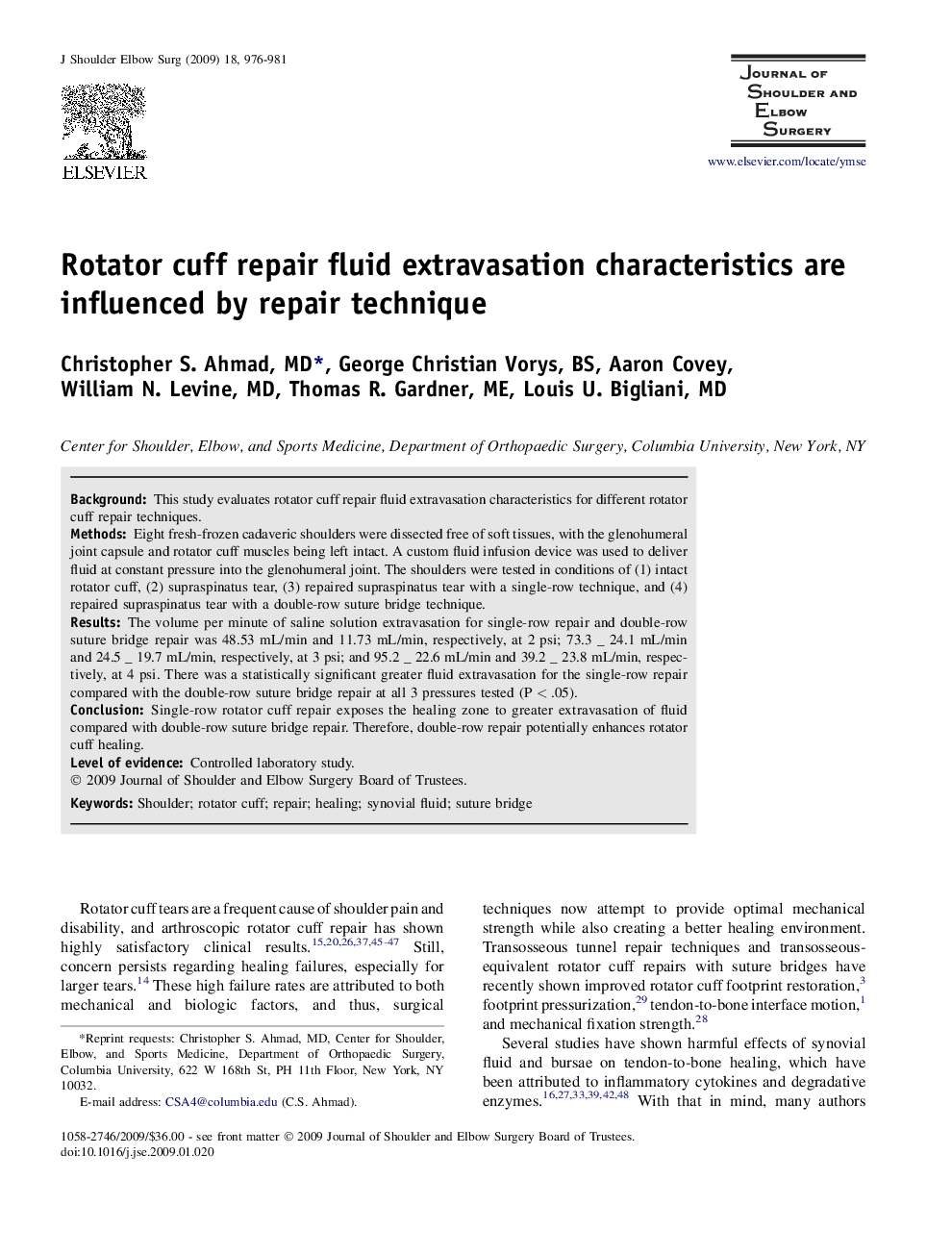| Article ID | Journal | Published Year | Pages | File Type |
|---|---|---|---|---|
| 4075103 | Journal of Shoulder and Elbow Surgery | 2009 | 6 Pages |
BackgroundThis study evaluates rotator cuff repair fluid extravasation characteristics for different rotator cuff repair techniques.MethodsEight fresh-frozen cadaveric shoulders were dissected free of soft tissues, with the glenohumeral joint capsule and rotator cuff muscles being left intact. A custom fluid infusion device was used to deliver fluid at constant pressure into the glenohumeral joint. The shoulders were tested in conditions of (1) intact rotator cuff, (2) supraspinatus tear, (3) repaired supraspinatus tear with a single-row technique, and (4) repaired supraspinatus tear with a double-row suture bridge technique.ResultsThe volume per minute of saline solution extravasation for single-row repair and double-row suture bridge repair was 48.53 mL/min and 11.73 mL/min, respectively, at 2 psi; 73.3 _ 24.1 mL/min and 24.5 _ 19.7 mL/min, respectively, at 3 psi; and 95.2 _ 22.6 mL/min and 39.2 _ 23.8 mL/min, respectively, at 4 psi. There was a statistically significant greater fluid extravasation for the single-row repair compared with the double-row suture bridge repair at all 3 pressures tested (P < .05).ConclusionSingle-row rotator cuff repair exposes the healing zone to greater extravasation of fluid compared with double-row suture bridge repair. Therefore, double-row repair potentially enhances rotator cuff healing.Level of evidenceControlled laboratory study.
